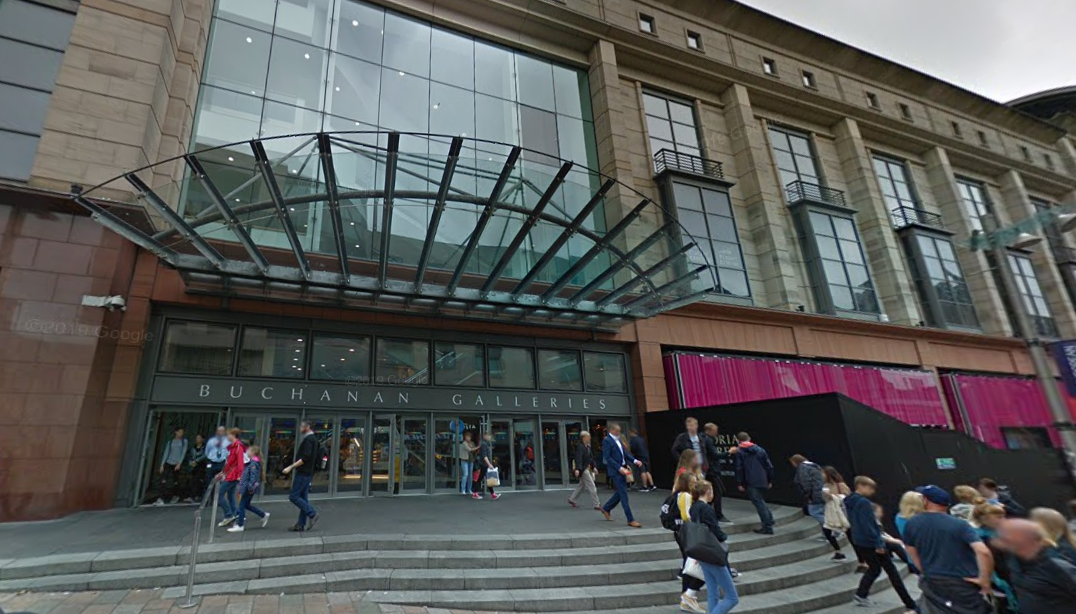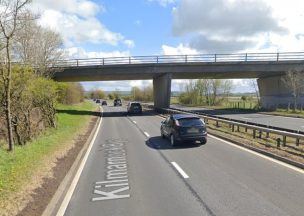The demolition of Buchanan Galleries would pave the way for the restoration of the historic high street and help ensure its future, Glasgow’s council leader has said.
On Thursday city councillors backed talks over knocking down the shopping centre, and an investment of over £825m in Glasgow, going ahead.
The decade-long project would see a new mixed-use quarter, with shops, offices, homes and leisure venues.
And council leader Susan Aitken insisted the demolition would save, not destroy, the city centre shopping area.
Landsec, the head tenant of Buchanan Galleries, will put £10m into planning the revamp after Glasgow City Council, the landlord, agreed negotiations could begin.
Council leader Susan Aitken said: “This responds directly to changes in the retail sector and consumer behaviour that have been exacerbated as a result of the covid pandemic but did pre-date that.
“Landsec has cited direct feedback and intelligence from their tenants in Buchanan Galleries, and from other household names in the retail sector, who are indicating that they don’t see their long-term presence on the high street as being within enclosed malls like Buchanan Galleries.
“I think the immediate reaction is that it is counterintuitive to destroy in order to save, to demolish the Buchanan Galleries in order to build resilience and sustainability into the city centre.
“It might be more helpful to think of the proposal as perhaps being a restoration of Buchanan Street and the surrounding area, to an on-street high street and retail experience.”
The project could also include capping the north cutting of the railway line at Queen Street station, creating land for a building or public space, and work to improve the Concert Hall steps, providing disabled access.
A pedestrian link from Buchanan Street to Killermont Street and Buchanan bus station could be developed too.
Aitken said the “exact steps may not continue” as they are “not in great condition and, most importantly, they are not accessible”, but there are plans for a “significant expansion of public space”.
She also said people would wonder why “such a radical transformation is necessary”, particularly given the environmental impact of demolition, but added Landsec has committed to a net-zero development.
The city’s Labour group leader, Cllr Malcolm Cunning, said the net-zero commitment would “need more flesh on the bones”. He added there are some concerns around whether investment in one area has a “knock-on effect in some other areas”.
Aitken said there are ongoing talks around the St Enoch Centre and the council has its Avenues project, which aims to make streets more ‘people-friendly’, as well as plans for George Square.
“Sauchiehall Street is undoubtedly in a state of flux, but the future of Sauchiehall Street is not attempting to recreate the past of Sauchiehall Street.
“Clearly retail is under stress in Glasgow as it is in every comparable city where that commercial high street model exists. In order to remain one of the biggest and most successful retail cities, we will have less retail.
“It will often be more distinctive or specialist, I think there will be a proliferation of independent retail sitting alongside the big high street names.”
She added: “Retail still has a hugely important role in the city centre, it is a big employer, particularly of women, but securing the future of retail means probably having a bit less of it and more of those other uses, particularly city centre living.”
Tax Incremental Finance (TIF) could be used to support the enabling works, such as capping the railway line. TIF, a financial mechanism promoted by the Scottish Government, had been planned for an earlier proposed redevelopment of Buchanan Galleries in 2010.
It allows a council to borrow over a 25-year period, with the extra non-domestic rates generated by new private sector investment, created by the development, used to repay the loan.
Green councillor Jon Molyneux asked if the business case would “look at other forms of financing, that may come at a higher cost but carry a lower risk”.
Aitken said there would be an options appraisal of different financing methods. She added it was a “possible outcome” that council officers didn’t recommend TIF.
It is expected to take up to 24 months for a business case to be developed.
By local democracy reporter Drew Sandelands
Follow STV News on WhatsApp
Scan the QR code on your mobile device for all the latest news from around the country


 Google Maps
Google Maps

























